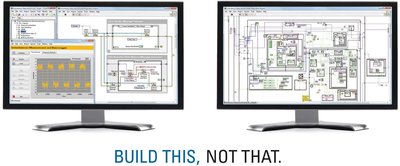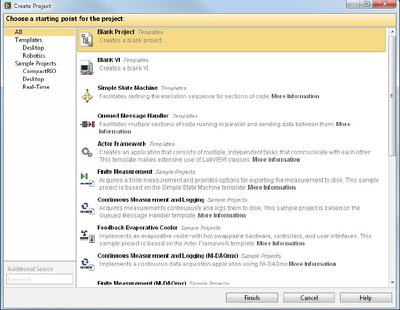Build it Fast, Build it Right With LabVIEW 2012
By Elijah Kerry, Senior Product Manager for LabVIEW at NI and a Certified LabVIEW Architect (CLA)
Tuesday, 16 July, 2013
Graphical system design is an integrated hardware and software approach to increase productivity as you develop any measurement or control system.
Each new version of NI LabVIEW system design software represents NI’s commitment to this approach and offers support for the latest hardware platforms. New features ensure that you have all of the tools you need to design and build your system in less time than with any other approach.
However, it’s not enough to build a system quickly. It’s equally important to build it right, which requires proper planning, a sound architecture, and well-written code. Bad code can be written in any language, but in G, bad code or ‘spaghetti code’ is arguably easy to spot. Not only is it hard to read, but it also exposes you and your projects to the many risks associated with a system that cannot easily be maintained or tested. Well-written G code is easy to understand and clearly conveys system functionality and architecture.
Building a system right ensures quality and reliability, minimises maintenance costs, paves the way for team-based development, and guarantees system accuracy and performance. The new features and resources in LabVIEW 2012 help you meet these needs by accelerating your success and the success of the systems you’re building.
Recommended starting points for your system
LabVIEW 2012 introduces built-in templates and sample projects, which provide recommended starting points designed to ensure the quality and scalability of a system. Templates demonstrate the most fundamentally important LabVIEW design patterns and serve as the building blocks for a majority of applications. The templates in LabVIEW 2012 include a simple state machine, a queued message handler and the actor framework.
Sample projects illustrate the use of one or more templates in an actual application. LabVIEW 2012 includes sample projects for desktop measurement systems, embedded control and monitoring systems, RF systems and multiprocess systems capable of dynamically spawning new tasks. These projects fulfil the most common requirements of these applications: responsive user interfaces, high reliability, deterministic performance, error handling and multiple independent tasks.

All of the templates and sample projects are open-source and include documentation that clearly shows how they work and best practices for adding or modifying functionality. These projects illustrate recommended architectures and best practices for documenting and organising code. If you are an advanced user, you can even complement the included list of templates and sample projects with your own, making the new Create Project feature a useful mechanism to share and distribute templates across a team of developers.

On-demand training
Like any powerful engineering tool, LabVIEW requires training and experience to maximise the productivity and overall success of a project. NI has built a large portfolio of instructor-led training courses on all aspects of the NI platform, ranging from the basics of LabVIEW to measurement best practices, embedded development, object-oriented architectures and even software engineering. Now, NI is adding access to on-demand, web versions of these instructor-led training classes.
The three fundamental LabVIEW classes (Core 1, 2, and 3) will be available online to any customer who has LabVIEW 2012 and a current service contract. This means you can add to your skills or get a new team member up to speed in less time, and the material is available any time you need it.
Continued focus on stability
LabVIEW 2012 represents another milestone in NI’s commitment to providing stable and highly reliable system design software. New error reporting capabilities added in LabVIEW 2011 give NI R&D much-needed information about where to focus efforts to resolve outstanding issues. Thanks to this data and to customers who agreed to send information when they experienced a problem, NI R&D was able to resolve key crashes, give you a smoother development experience, and help ensure your productivity and overall success. In LabVIEW 2012, the error reporting capabilities are increasing with a new customer experience program to improve and refine all aspects of your experience.
On top of increased platform stability, LabVIEW 2012 offers the following features:
- Control and visualise data from LabVIEW systems on an iPad
- Use new analysis libraries for image processing and sparse matrix manipulation
- Simplify and speed up FPGA application development with optimisation improvements
- Import industry-standard models to design and simulate complex control systems and robots
- Use enhancements powered by the developer community on the Idea Exchange
With these new features, LabVIEW 2012 accelerates your success and the success of any measurement or control system.
See a complete list of features at ni.com/labview/whatsnew.
Wireless innovation transmits vast amounts of data
Researchers have developed a machine-learning system that curves ultrahigh-frequency signals...
Ricoh chooses u-blox module for long-lasting GNSS performance
The Ricoh Theta X camera incorporates the ZOE-M8B GNSS module from u-blox, allowing users to...
Single-step 3D printing method to create tiny robots
The breakthrough enables the mechanical and electronic systems needed to operate a robot to be...




